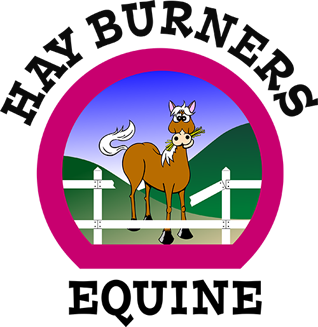Lets talk about hanging nets
Lets talk about hanging nets
Hay Burners Equines’ regular nets come with a paracord draw string with cord lock, The idea of using the paracord it that its stays tied quite well. You simply pull the cords to close the slow feed hay bag with the cord lock, do a quick slip knot to lock the keeper in place and thread the hanging clip (like the carabiners) through the netting just under the draw string. Hanging in this manner keeps the draw string rope knot from getting so tight you have to fight with it to get it loosened back up. I have been personally using this method for many years with my own horses. For those folks that prefer to hang our slow feed hay nets using the draw strings, we have the rope upgrade available. We do it this way so folks that don’t want/need the heavy rope don’t have to pay extra for their bags.
When hanging nets, here are a few things to think about the will impact how the horses feed from a slow feed net
A 1″ mesh (opening) hay net hanging from a tree branch will be more difficult to feed from, than the same 1″ mesh (opening) hay net hung against the wall. This is because the horse cannot press the net against a firm surface to squish the hay through the holes. The slow feed net hanging from the tree branch will just bounce around when the horse pushes on it.
The thicker cording on our hay nets make feeding slower than thinner corded net. This is very evident when it comes to our light weight 3/4″ mesh (holes) vs the 3/4″ mesh (holes) heavy weight nets. The heavier cord keeps the hay farther back in the net. The lighter weight lets the hay poke through more. Hopefully that makes sense.
Netting that lays on the hay, like our toppers for tanks and hay baskets, is more difficult for the horses to feed from than hanging nets that have gravity helping (Reference our blog “Slow feed net for hay baskets and tanks”
We also prefer to clip our hanging nets from just the tops for safety reasons, if a horse rears or does something silly it does’t give them a opportunity to tangle themselves up in the netting. We added plastic clips to our stationary wall nets for this reason. If a horse gets a leg over it, the plastic clips will fail before the horse gets seriously hurt.
